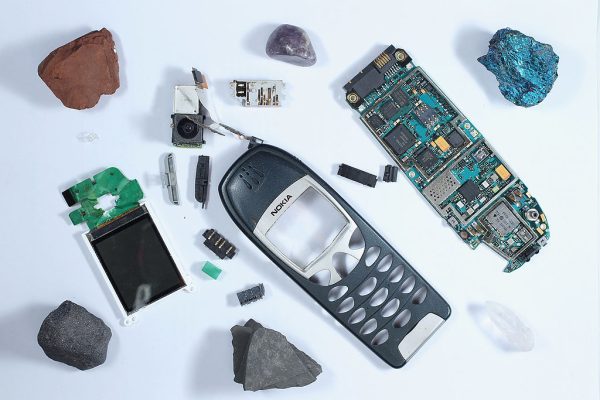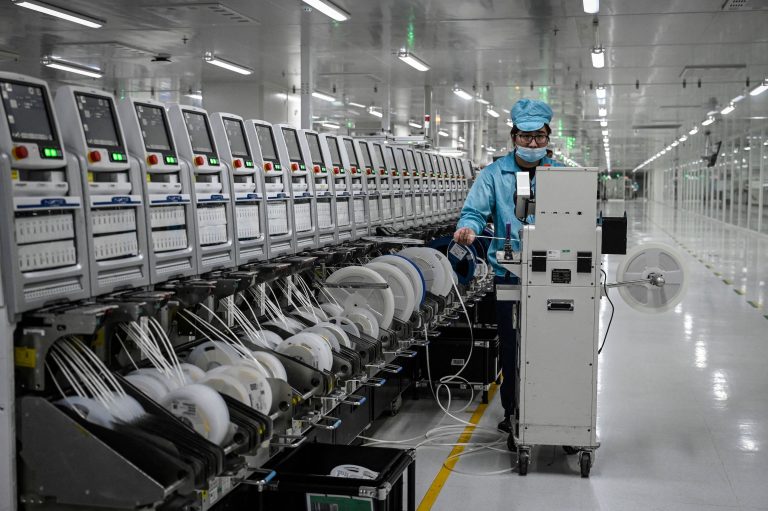For years, China has dominated the global market for rare earth metals. These vital materials are used to make cell phones, computers, semiconductors, electric vehicles and renewable energy systems.
According to the U.S. Geological Survey, China was responsible for 80 percent of the world’s rare earth imports in 2019 — though those numbers have since fallen, in part due to the COVID-19 pandemic. By 2020, those imports had decreased to 78 percent.
Following the Biden administration’s push to limit Beijing’s ability to curb the market on these materials in early 2021, China’s grip on rare earths supply appears to be increasingly dwindling. As part of the push, Biden signed the Inflation Reduction Act in August — marking the largest federal investment in climate and energy law in U.S. history. The act also sought to create thousands of new jobs in clean energy and manufacturing sectors.
- UCore and Alternatives to China’s Rare Earth Dominance
- US Bill Seeks to Prevent Defense Industry From Becoming Dependent on Chinese Rare Earths
- Tesla Needs $100 Billion Worth of Metals to Reach Musk’s 2020 Production Goal
- Australia Targets China’s Tungsten Supply Domination With New Project
A weakening grip?
In 2019, Chinese leader Xi Jinping — who just secured a precedent-breaking third term as the country’s president and as head of the Communist Party at its recent 20th national congress — made a visit to a rare-earth magnet factory located in the southeastern province of Jiangxi.
A few days later, an editorial by state-run Xinhua news agency warned that by “waging a trade war against China, the United States risks losing the supply of materials that are vital in sustaining its technological strength.”
Success
You are now signed up for our newsletter
Success
Check your email to complete sign up
Hu Xijin, former editor-in-chief at the Global Times, claimed that the Chinese government was “seriously considering” weaponizing exports of rare earth elements to the U.S. and other countries in the West.

Though the answer to China’s market-hogging may seem simple: finding alternate sources for the distribution of rare earth metals; in practice, it’s much more complicated. For starters, China’s manual labor is much cheaper compared to other countries — resulting in many Western nations outsourcing to China, India and Taiwan — attracted by its affordable workforce and laxer environmental regulations.
Though China also leads the market in rare earths due to the majority of its producers being state-owned or subsidized by the Chinese government, it has seen no shortage of controversy over trade and diplomatic disputes with other countries.
In 2010, for example, the Chinese government halted exports of rare earth metals to Japan over a trade spat. Though the disagreement took place over a decade ago, Japan still hasn’t managed to wean itself off of China’s rare earth elements. According to the Observatory of Economic Activity, Japan went from importing 74 percent of its rare earths from China in 2010, to 27 percent in 2020.
Ending China’s market dominance
Biden’s sweeping $2 trillion infrastructure legislation also seeks to rebuild the country’s semiconductor industry in a hefty way — only 12 percent of chips are manufactured domestically.
Since then, Biden signed an executive order designed to review gaps in U.S.’ supply chains for rare earth metals, medical devices, semiconductors, lithium battery manufacturing for electric vehicles (EVs) and other key resources. In March 2021, the Department of Energy announced a $30 million initiative that will focus on “researching and securing the U.S. domestic supply chain for rare earths and other important minerals.”
“It’s absolutely correct that there is a cornering of the market with lithium and other rare earths,” Biden’s climate envoy John Kerry told CNBC during a summit on energy innovation in 2021.
But despite recent efforts by the U.S. to rival China in the rare earths market, and bolster a domestic industry, results will take time, experts say.
“It’s technically possible to try and rebuild the entire supply chain because we once had it,” Jane Nakano, a senior fellow at the Center for Strategic International Studies’ Energy Security and Climate Change Program said.
“It’s not that we’re not experienced, it’s not that we have no idea of what the domestic supply chain may look like,” Nakano said, underscoring how financial, environmental and political factors could all thwart Biden’s ambitious green energy push — especially in the short-term.












